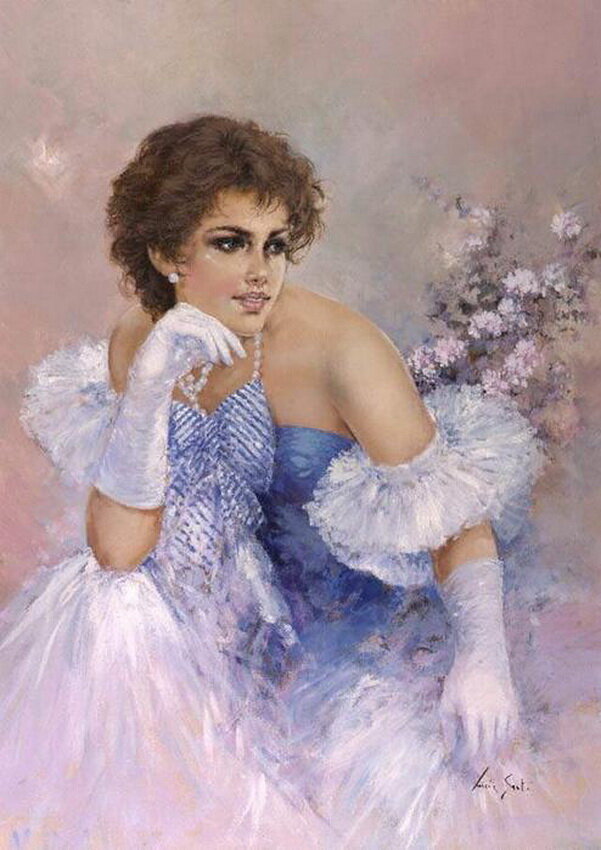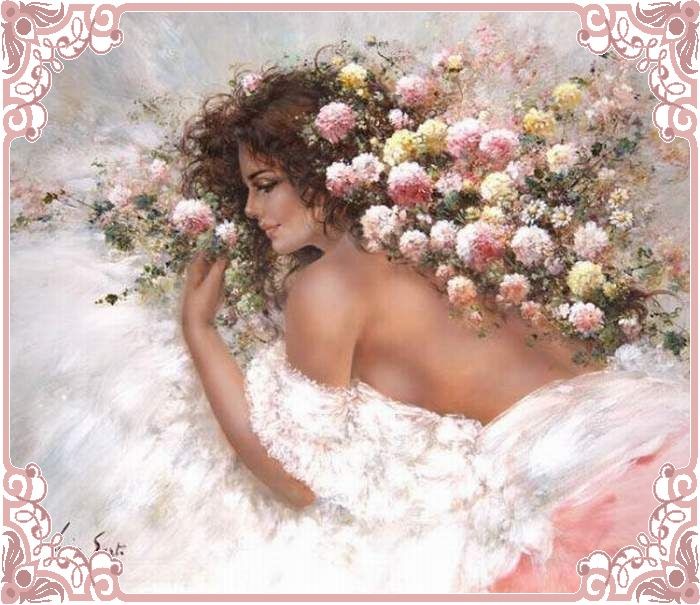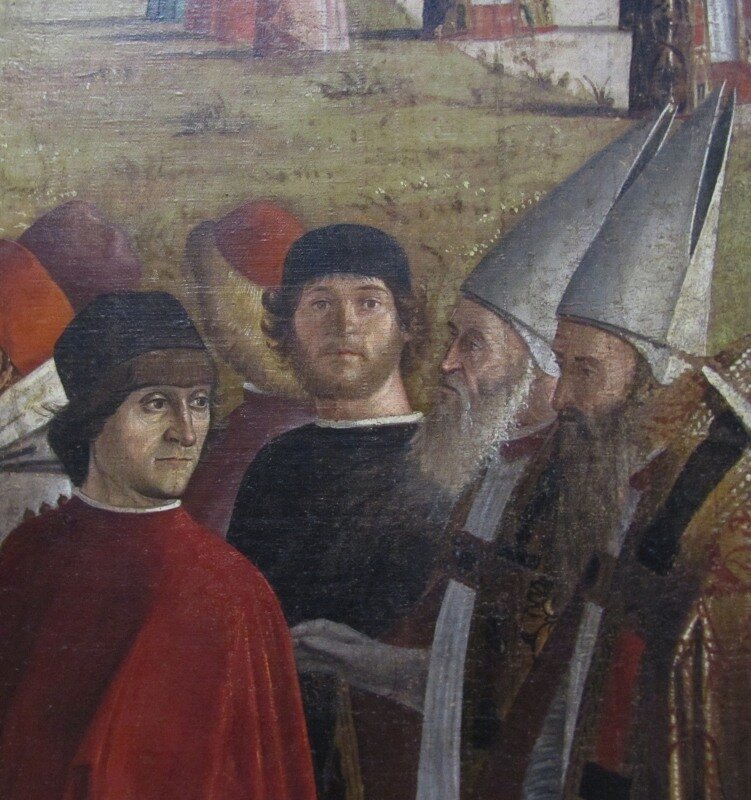Pablo Picasso Biography. Picasso pablo картины
Главная - Пикассо Пабло биография и все картины плюс описание
Пабло Пикассо
Художественный гений Пабло Пикассо (1881-1973) оказал на развитие современного искусства беспрецедентное влияние.  Пикассо - руки художника Результат его деятельности включает в себя более 20 тысяч картин, гравюр, рисунков, скульптур, керамики, театральные декорации и костюмы, которые передают мириады интеллектуальных, политических, социальных и амурных посланий. Творческие стили Пикассо выходят за рамки реализма и абстракции, кубизма, неоклассицизма, сюрреализма, экспрессионизма. Родился в Малаге, Испания, в 1881 году, Пикассо изучал искусство кратко в Мадриде в 1897 году, а затем в Барселоне в 1899 году, где он стал тесно связан с группой модернистских поэтов, писателей и художников, которые собирались в кафе "Четыре кошки", в числе которых были Карлос Касахемас и Хайме Сабартес.
Пикассо - руки художника Результат его деятельности включает в себя более 20 тысяч картин, гравюр, рисунков, скульптур, керамики, театральные декорации и костюмы, которые передают мириады интеллектуальных, политических, социальных и амурных посланий. Творческие стили Пикассо выходят за рамки реализма и абстракции, кубизма, неоклассицизма, сюрреализма, экспрессионизма. Родился в Малаге, Испания, в 1881 году, Пикассо изучал искусство кратко в Мадриде в 1897 году, а затем в Барселоне в 1899 году, где он стал тесно связан с группой модернистских поэтов, писателей и художников, которые собирались в кафе "Четыре кошки", в числе которых были Карлос Касахемас и Хайме Сабартес. 
ipicasso.ru
Pablo Picasso — 2919 artworks, art periods, biography, photo, video, quotes
4 recent comments
 19 JulyYemi Stembridge from Denver wrote: This piece is currently on display in Malaga, ES at the Picasso Museum.
19 JulyYemi Stembridge from Denver wrote: This piece is currently on display in Malaga, ES at the Picasso Museum.  06 Julyadmin from Spb wrote: Maria, Minnesota Marine Art Museum awnsered me: "We have two paintings by Pablo Picasso in our collection, "Arles, Les Arènes devant le Rhône II," and "Homme Assis."
06 Julyadmin from Spb wrote: Maria, Minnesota Marine Art Museum awnsered me: "We have two paintings by Pablo Picasso in our collection, "Arles, Les Arènes devant le Rhône II," and "Homme Assis." 
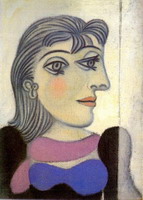 18 Juneadmin from spb wrote: Zendora, please see
18 Juneadmin from spb wrote: Zendora, please see All artworks by years
1. Childhood and years of education (1881-1900)
 Pablo Picasso was born in 1881, October 25 in the town Malaga (Spain, Andaluzia). His christened full was Pablo Diego Jose' Francisco de Paula Juan Nepomuceno Mari'a de los Remedios Crispi'n Crispiniano de la Santi'sima Trinidad Ruiz y Picasso That were the sequence of the names of admirer holy men and his family relatives. Picasso - it was the maiden surname his mother which he took for himself. His father had name Hose Ruis, it was too ordinary and at the same time he was also an artist.
Pablo Picasso was born in 1881, October 25 in the town Malaga (Spain, Andaluzia). His christened full was Pablo Diego Jose' Francisco de Paula Juan Nepomuceno Mari'a de los Remedios Crispi'n Crispiniano de la Santi'sima Trinidad Ruiz y Picasso That were the sequence of the names of admirer holy men and his family relatives. Picasso - it was the maiden surname his mother which he took for himself. His father had name Hose Ruis, it was too ordinary and at the same time he was also an artist. Pablo was shown his drawing talent since early childhood. He was studied his father since 7 years. He had been instructed to draw paws of pigeons on the father`s pictures. But once his father charged to complete the picture of the quite large still life and he was surprised his son`s technique so much, that he by legend left off own painting.
When Pablo was 13 he brilliantly entered in the Barselona Academy of Arts. Preparation for exam was taken usually one month for others students. Pablo used one week only. The examiners were surprised his mastership and he was taken in Academy spite of his adolescent age. His father and uncle settled to send Pablo in the Madrid Academy "San Fernando" known as the forward School of Art in Spain. So Pablo came to Madrid in 1897 when he was 16. However classes at School of Art lasted not a long time (less than one year) he was captured with charm of style Madrid life and studying works of the impressing artists those days: Diego Velaskes, Fransisco Goya and particularly El Greko.
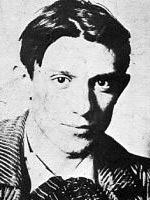 The collection Picasso's early works is in
Barselona in the Picasso's Museum. The well-known works from them are: "First Communion" (1896)
- it is the large picture representing his sister Lola,
"Selfportrait" (1896), "Portrait of the Artist's Mother" (1896).
Being grown up Picasso visited an exhibition of child drawings and he said:
"When I was like those children I had drawn like Rafael, but I demanded all my life to study drawing like they".
The collection Picasso's early works is in
Barselona in the Picasso's Museum. The well-known works from them are: "First Communion" (1896)
- it is the large picture representing his sister Lola,
"Selfportrait" (1896), "Portrait of the Artist's Mother" (1896).
Being grown up Picasso visited an exhibition of child drawings and he said:
"When I was like those children I had drawn like Rafael, but I demanded all my life to study drawing like they".
During the period of his education in Madrid Picasso made the first tour in Paris. That city was the confident European capital of art. Pablo visited all museums there during some months and studied masterpieces of the great painters: Delacroix, Toulouse-Lautrec, Vincent van Gogh, Gauguin and many others. Also he was keen on Finickia and Egyptian Arts, Gothic sculpture, Japan painting. Pablo was interested absolutely all. In Paris he met Ambroise Vollard, a collector and trader of paintings, poets Max Jacob and Guillaume Apollinaire and others. Picasso visited Paris again in 1901, 1902 and finally came over there in 1904.
2. Blue Period (1901-1904)
Paintings made in interval 1901 and 1904 are attributed to that period. Grey-blue and light -blue-green deep cold colors, colors of sorrow and low spirits are constantly in those works. Picasso called blue as "color of all colors". The frequent topics those pictures are exhausted mothers and their children, vagabonds, beggars and blinds. The most well known pictures from them are "Life" (1903), "Breakfast of a Blind Man" (1903), "The poor meal" (1904), "The Absinthe Drinker" (1901), "The Visit (Two Sisters)" (1902), "Mother and her baby" (1903), "Old Beggar with a Boy" (1903, "Woman Ironing" (1904).
3. Rose Period (1904 - 1906)
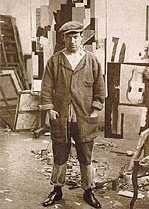 The "rose" period is represented more full of life tones охристый and rose, and also steady topics of pictures- clowns, vagabond actors , acrobats "The family of Saltimbanques" (1905), "Acrobat and Young Harlequin" (1905), "Joker" (1905). Charmed with comedians which became the models his picture, he often visited the Medrano Circus. During that time a clown was his favorite personage .In 1904 Picasso met a model Fernande Olyvie who inspired his for creation many important pictures of that time. They lived in the centre of Paris' Bohemian life and Mecca of painters -in Bafouz -La Vouar. That strange half-destroyed building with dark stairs and winding corridors was home for various company : poets, traders, yardmen. There in an atmosphere of absolute poverty and on a verge of misery and in indescribable creative chaos Picasso drew his Fernande and searched for his own way. The outstanding "Acrobat on a Ball" (1905) is taken type of transitional pictures between "blue" and "rose" periods. he artist plays in the contrast and balance of shapes or lines, weight and light, stability and instability. Also in the end of the "rose" period were appeared "antique" pictures - "Boy Leading a Horse" (1906), "Young Girl with a Goat" (1906) and others.
The "rose" period is represented more full of life tones охристый and rose, and also steady topics of pictures- clowns, vagabond actors , acrobats "The family of Saltimbanques" (1905), "Acrobat and Young Harlequin" (1905), "Joker" (1905). Charmed with comedians which became the models his picture, he often visited the Medrano Circus. During that time a clown was his favorite personage .In 1904 Picasso met a model Fernande Olyvie who inspired his for creation many important pictures of that time. They lived in the centre of Paris' Bohemian life and Mecca of painters -in Bafouz -La Vouar. That strange half-destroyed building with dark stairs and winding corridors was home for various company : poets, traders, yardmen. There in an atmosphere of absolute poverty and on a verge of misery and in indescribable creative chaos Picasso drew his Fernande and searched for his own way. The outstanding "Acrobat on a Ball" (1905) is taken type of transitional pictures between "blue" and "rose" periods. he artist plays in the contrast and balance of shapes or lines, weight and light, stability and instability. Also in the end of the "rose" period were appeared "antique" pictures - "Boy Leading a Horse" (1906), "Young Girl with a Goat" (1906) and others.
4. African Period (1907 - 1909)
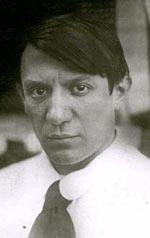 In 1906 Picasso drew a portrait of Gertrude Stein. He redrew it abiut 80 times and by her remembrance finally Picasso said her furiously: "I stop to see you
when I look at you." and he discontinued his work. It was the turning-point in his creation and from there he began his way from representations separate people to representation a man as the man and to a shape like self-contained The "African" period (1907-1909) structure. Picasso needed confirmations his own way common development of the world art and new impressions for receipt new creation energy. The since opening of that time the whole layer of the African culture became an impulse for creation of the artist, He especially was interested African culture and masks, he reckoned that they had magic power and he had found in them the sensual simplicity of shapes. In summary just these "African influences " gave the definition of the conclusive variant of portrait.
In 1906 Picasso drew a portrait of Gertrude Stein. He redrew it abiut 80 times and by her remembrance finally Picasso said her furiously: "I stop to see you
when I look at you." and he discontinued his work. It was the turning-point in his creation and from there he began his way from representations separate people to representation a man as the man and to a shape like self-contained The "African" period (1907-1909) structure. Picasso needed confirmations his own way common development of the world art and new impressions for receipt new creation energy. The since opening of that time the whole layer of the African culture became an impulse for creation of the artist, He especially was interested African culture and masks, he reckoned that they had magic power and he had found in them the sensual simplicity of shapes. In summary just these "African influences " gave the definition of the conclusive variant of portrait. 5. Cubism (1909 - 1917)
 They distinguish the "Cubism" period of Picasso on some steps. "sessan cubism" represented "Decanter and Tureens" (1908), "Three Women" (1908), "Woman with a Fan" (1909) and other are characterized "sessan" tones: sienna, light-green, brown, but more washed-out, muddy with using of the simple geometric shapes which a picture is built from. "Analytic" cubism: a subject is separated on small parts which are distinctly detached one from another and the subject form is faded on the canvas. "Portrait of Ambroise Vollard" (1910), "Factory in Horta de Sant Joan" (1909), "Portrait of Fernarde" (1909), "Portrait of Kahnweiler" (1910). On the step of "synthetic" cubism pictures of Picacco had the decorative and contrast character . They were generally represented with still life of the different subjects: musical instruments , music, bottles of vine, smoke pipes, dishes, posters. "Still-Life with Chair Caning" (1911-1912), "Bottle of Pernod (Table in a Cafe)" (1912) "Violin and Guitar" (1913).
They distinguish the "Cubism" period of Picasso on some steps. "sessan cubism" represented "Decanter and Tureens" (1908), "Three Women" (1908), "Woman with a Fan" (1909) and other are characterized "sessan" tones: sienna, light-green, brown, but more washed-out, muddy with using of the simple geometric shapes which a picture is built from. "Analytic" cubism: a subject is separated on small parts which are distinctly detached one from another and the subject form is faded on the canvas. "Portrait of Ambroise Vollard" (1910), "Factory in Horta de Sant Joan" (1909), "Portrait of Fernarde" (1909), "Portrait of Kahnweiler" (1910). On the step of "synthetic" cubism pictures of Picacco had the decorative and contrast character . They were generally represented with still life of the different subjects: musical instruments , music, bottles of vine, smoke pipes, dishes, posters. "Still-Life with Chair Caning" (1911-1912), "Bottle of Pernod (Table in a Cafe)" (1912) "Violin and Guitar" (1913). Despite underestimating the most of people Picasso's pictures they are bought very well. At last the poverty existence is ended, Pablo and Fernande moved in 1909, September into the spacious and light workshop on the street Clichy. Picasso, of course, didn't forget to convey his compulsory chaos: fancy bottles and vases, guitars, an old carpet, pictures of his favourite artists - Matisse, Cezanne, Russo, the collection of African masks. He always said he felt horror from harmony and good taste. He bought things which he liked, didn't worry how they looked.
In 1911, Autumn Picasso parted with Fernande. His new muse became Eva (Marsel Umber). They lived together and he created his own the cubism works on Montparnasse and in Avignon. One from them dedicated Eva was "Nude, I love Eva" (1912). Then were become the painful years: the World War I, a mobilization and parting withy many friends, a sudden illness and tragic Eva's death.
6. Neoclassicism (1918 - 1925)
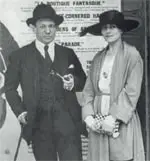 In 1917, Spring a poet Jean Cocteau collaborated with Sergei Diaghilev had proposed to Picasso to make sketches and decorations for a future ballet. The artist went to work in Rome where he fell in love in one dansers of the Diaghilev's group- Olga Hohlova. They were married in 1918 and their son Paul was born in 1921.
In 1917, Spring a poet Jean Cocteau collaborated with Sergei Diaghilev had proposed to Picasso to make sketches and decorations for a future ballet. The artist went to work in Rome where he fell in love in one dansers of the Diaghilev's group- Olga Hohlova. They were married in 1918 and their son Paul was born in 1921. 7. Surrealism (1925 - 1936)
"A beauty will be convulsive or it won't be" - said Andre Breton, an establisher of Surrealizm as the direction in art, set his goal achievement true depths of the art creature, due to penetrating in the world of dreams and involuntary. In 1925 Picasso had drawn the picture "A dance". It is the aggressive, painful picture with the deformed figures, it reflects hard period of his family life and at the same time declares new turning-point in his creature. Picasso was close to the surrealist artists but he had always his own way. The pictures of that period are "Bather Opening a Cabin" (1928), "Figures on a Beach" (1931), "Woman with a Flower" (1932) and others.It was in 1927, one cold day Picasso had met 17 years old Marie Therese Walter. He had bought for her the castle Boaugeloo and she became there his the only model and heroine of some his known pictures: "Mirrow" (1932, private collection ), "The girl in front of a mirror" (1932, MoMA, New-York ). She was also the model for the sculpture "A women with a vase" (now it is on the artist's tomb). In 1935 Marie-Therese had gave birth to daughter Maya, but before 1936 Picasso parted with them, also he wasn't devoted with Olga Hohlova until her death in 1955.
In 1932-1934 Picasso was interested sculpture art and he created the series of sculptures in manner of surrealizm : "Laying woman" (1932), "A man with a bouquet"(1934), and also he built different metal constructions with helping his Spanish friend- a sculptor Hoolio Gonzales. In those 1930s Picasso created the series of etchings to "Metamorphoses" of Ovidy (1932) and to work of Aristophan (1934) attesting that a classic art was always a strong resource of inspiration
8. War in Spain. Guernica. World War II (1937-1945)
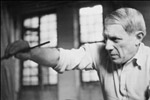 Since 1930s in Picasso's creature was appeared his key aspect and image - a Bull, Minotaurus. The artist created the series of works with this personage ("`Minotaurusmahia", 1935) and he traced his own point of view about the Minotaurus' myth. For him the Bull, Minotaurus was the destructive power, war and death. he well known Picasso's picture "Guernica" (1937) became an apogee of development that theme. Gernika is a small town of the Basks on the north of Spain, practically destroyed with the German aviation in 1937, 1st of May. This large (about 8 meters of length and 3,5 meters of height monochromatic (black, white, gray) picture was shown at first in the Republican Pavilion of Spain in Paris during the World Exhibition. One day the German officers had made a search of Picasso's house and a Nazi looked at the table photo of "Gernika" asked : "Have you done it ?". "No, I haven't. You have done it." answered the artist.
Since 1930s in Picasso's creature was appeared his key aspect and image - a Bull, Minotaurus. The artist created the series of works with this personage ("`Minotaurusmahia", 1935) and he traced his own point of view about the Minotaurus' myth. For him the Bull, Minotaurus was the destructive power, war and death. he well known Picasso's picture "Guernica" (1937) became an apogee of development that theme. Gernika is a small town of the Basks on the north of Spain, practically destroyed with the German aviation in 1937, 1st of May. This large (about 8 meters of length and 3,5 meters of height monochromatic (black, white, gray) picture was shown at first in the Republican Pavilion of Spain in Paris during the World Exhibition. One day the German officers had made a search of Picasso's house and a Nazi looked at the table photo of "Gernika" asked : "Have you done it ?". "No, I haven't. You have done it." answered the artist.The series of monsters was created in the same period "Dreams and lie of General-in Chief Franko (1937) (in 1936 Picasso had supported the Republicans and spoke against adherents of Franko ) and many pictures with the close themes: "Night Fishing at Antibes" (1939), "Weeping Woman" (1937) (that picture was drawn from Dora Maar, Yugoslavian woman- photographer, he met her in 1936; she was become famous that she made photos of his works with "Guernica").
During World War II Picasso had lived in France where he brought together with communists - members of Resistance (in 1944 Picasso had even joined to the French Communist Party). In that time he had created the pictures with the same maintenance- Bull, War and Death: they are "Still Life with Steers Skull" (1942), "Morning serenada" (1942, National Museum of Modern Art, Pompidou Center, Paris), "Battle" (1944-1945, MoMA, New York) and other which was later mounted in front of the oldest Roman cathedral on the trading square of town Walloris on the south of France.
9. After War (1945 - 1960s)
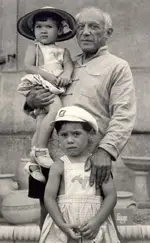 n the peace time, in 1946 Picasso had made the picturesque ensemble from 27 panels and pictures for a castle of the noble family Grimaldy in Antibes, it is a town on the Mediterranean seaside of France. The panel in the first hall is named "The joy of life" and all series is represented as harmony of nature with existence - it is the representation of fauns, naked girls, centaurs, fairy-tale creatures..
n the peace time, in 1946 Picasso had made the picturesque ensemble from 27 panels and pictures for a castle of the noble family Grimaldy in Antibes, it is a town on the Mediterranean seaside of France. The panel in the first hall is named "The joy of life" and all series is represented as harmony of nature with existence - it is the representation of fauns, naked girls, centaurs, fairy-tale creatures.. In 1946 Picasso had met a young artist - woman Francoise Gilot and came over with her in the castle Grimaldy. Soon she gave him a son Claudd and a daughter Paloma. The picture "Women-Flower" was dedicated to Francoise (In 1953 Francoise ran away from Picasso with both children through his difficult character and permanent infidelity; it was hard for him that parting and it reverberated on his work of that period. An ugly old pygmy and young beautiful girl are contrasted as a slapstick in many drawings with Indian ink.
In 1946 Picasso had drawn his well known "Dove of Peace" on the poster for the World congress supporters of peace in Paris, and in 1951 he created the politic picture "Massacre in Korea" (the Museum of Picasso, Paris). Since 1947 Picasso had lived on the south of France, in town Vallauris where he drew the walls of an old chapel with allegoric symbols of peace and war, and he named his work as "The temple of peace". In Vallauris Picasso was interested in ceramics. He had created his favorite personages - centaurs, fauns, pigeons, bulls, women; he made anthropomorphous jars. Before nowadays the ceramic workshops are kept in that town and they carry edition of many copies things with the mark "Picasso" which was created by the artist. In 1958 the famous artist of standing reputation had created the monumental composition "The Fall of Icarus" for the building UNESCO in Paris. In 1961 80-years old Picasso had married 34-years old beautiful Jacqueline Roque. She had inspired him for series of picture where everyone can see her chiselled profile sphinx. He had bought a villa in Cannes for himself and herself.
10. Last years (1960-s - 1973)
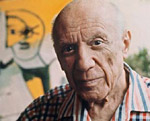 In 1960 Picasso had drawn the different variations of themes by famous masters of art - Vela'zquez, Goya, Manet - in the free scandal cubism manner.
In 1960 Picasso had drawn the different variations of themes by famous masters of art - Vela'zquez, Goya, Manet - in the free scandal cubism manner. During the later period of his creature he often appealed to a woman portrait (portraits of Jacqueline Roque). She remained the last and loyal to Picasso woman. She took care of his health when he was ill, blind and hard of hearing till his death. Picasso died in 1973, April 8 in town Mudzen in France. He was 92 - years old multimillionaire and buried near his own castle Vauvenargues. He left more than 80,000 works (another information approximately 20,000 ). He said about Death: "I think about Death all time, it is as a woman who will never leave me". In 1970 the Museum of Picasso was opened in Barselona (the pictures for that museum were given in possession by himself) and in 1985 with helping his heir apparents was founded the Museum of Picasso in Paris, counted more than 200 pictures, 150 sculptures and some thousands drawings, collages, prints, documents.
The Picasso's creature had been influenced on developing of Art and Culture of XX century. And on the world auctions before nowadays are searched and sat out for sale new and new little known works of famous artist from his huge heritage.
Copying this article partially or fully permitted only if there is a direct link to this website
www.pablo-ruiz-picasso.net
Категория:Картины Пабло Пикассо - WikiVisually
1. Авиньонские девицы – Les Demoiselles dAvignon is a large oil painting created in 1907 by the Spanish artist Pablo Picasso. The work portrays five nude female prostitutes from a brothel on Carrer dAvinyó in Barcelona, each figure is depicted in a disconcerting confrontational manner and none are conventionally feminine. The women appear as menacing and rendered with angular and disjointed body shapes. Three figures on the left exhibit facial features in the Iberian style of Picassos native Spain, the racial primitivism evoked in these masks, according to Picasso, moved him to liberate an utterly original artistic style of compelling, even savage force. In this adaptation of Primitivism and abandonment of perspective in favor of a flat, two-dimensional picture plane and this proto-Cubist work is widely considered to be seminal in the early development of both Cubism and Modern art. Les Demoiselles was revolutionary and controversial, and led to anger and disagreement, even amongst the painters closest associates. Matisse considered the work something of a bad joke, yet indirectly reacted to it in his 1908 Bathers with a Turtle, Braque too initially disliked the painting, yet perhaps more than anyone else, studied the work in great detail. And effectively, his subsequent friendship and collaboration with Picasso led to the Cubist revolution and its resemblance to Cézannes Les Grandes Baigneuses, Paul Gauguins statue Oviri and El Grecos Opening of the Fifth Seal has been widely discussed by later critics. A photograph of the Les Demoiselles was first published in an article by Gelett Burgess entitled The Wild Men of Paris, Matisse, Picasso and Les Fauves, The Architectural Record, at the time of its first exhibition in 1916, the painting was deemed immoral. The work, painted in the studio of Picasso at Le Bateau-Lavoir, was seen publicly for the first time at the Salon d’Antin in July 1916, an exhibition organized by the poet André Salmon. Picasso, who had referred to it as mon bordel, or Le Bordel dAvignon, never liked Salmons title. Picasso came into his own as an important artist during the first decade of the 20th century and he arrived in Paris from Spain around the turn of the century as a young, ambitious painter out to make a name for himself. Although he eventually left most of his friends, relatives and contacts in Spain, he continued to live, for several years he alternated between living and working in Barcelona, Madrid and the Spanish countryside, and made frequent trips to Paris. By 1904, he was settled in Paris and had established several studios. Between 1901 and 1904, Picasso began to achieve recognition for his Blue period paintings, in the main these were studies of poverty and desperation based on scenes he had seen in Spain and Paris at the turn of the century. Subjects included gaunt families, blind figures, and personal encounters, other paintings depicted his friends and he followed his success by developing into his Rose period from 1904 to 1907, which introduced a strong element of sensuality and sexuality into his work. Picasso became a favorite of the American art collectors Gertrude Stein, the Steins older brother Michael and his wife Sarah also became collectors of his work. Picasso painted portraits of both Gertrude Stein and her nephew Allan Stein, Gertrude Stein began acquiring Picassos drawings and paintings and exhibiting them in her informal Salon at her home in Paris
2. Алжирские женщины – Les Femmes dAlger is a series of 15 paintings and numerous drawings by the Spanish cubist artist Pablo Picasso. The series was inspired by Eugène Delacroixs 1834 painting The Women of Algiers in their Apartment, the series is one of several painted by Picasso in tribute to artists that he admired. The entire series of Les Femmes dAlger was bought by Victor, ten paintings from the series were later sold by the Ganzs to the Saidenberg Gallery, with the couple keeping versions C, H, K, M and O. Many of the paintings in the series are now in prominent public. In December 1954, Picasso began to paint a series of variations on Delacroixs The Women of Algiers in their Apartment. Matisse had been famous for his images of languid, voluptuous women known as odalisques — the French form of the Turkish word for women in a harem, when Matisse died he left his odalisques to me as a legacy, joked Picasso. Many of Picassos portrayals of Jacqueline circa 1955–56 represent her in this guise, the consequences of Picassos Femmes dAlger series were far-reaching, I thought so much about Les Femmes dAlger that I bought La Californie, Picasso explained to his biographer Pierre Daix. La Californie is a Belle-Époque villa situated in the foothills of Cannes in the South of France, Picasso bought it in 1955, and it was here that he painted the Nude in a Rocking-Chair. The light-filled interiors, the views over the Mediterranean and the exotic garden evoked a feeling of spaciousness, the art historian and collector Douglas Cooper was perhaps the first to realise that the paintings done at La Californie marked a return to Picassos peak form. In April 1956, he wrote to the curator Alfred Barr, I recently spent the day with Picasso, version C was sold in 1988 following Victor Ganzs death. Version H was completed on 24 January 1955, and was in sold for $7.15 million in November 1997, as part of the Ganz collection and it is part of the Nahmad Collection in Switzerland. In May 2015, it was on loan to Tate Liverpool, version J was sold at Sothebys in London in 2006 for $18.6 million and is part of the Nahmad Collection. Version K sold for $6.6 million in November 1997, as part of the Ganz collection, version L was bought by the Berggruen Museum in Berlin in 2011 for $11.4 million. Version M sold for $10 million in November 1997, as part of the Ganz collection, version N is held by the Mildred Lane Kemper Art Museum at Washington University in St. Louis, and was bought by the Steinberg Fund, for the university, in 1960. Version O, the painting in the series, was painted in 1955. The painting sold for $31.9 million in November 1997, as part of the Ganz collection, Three other versions in the series owned by the Ganz family were also auctioned at the same time. Version O was bought, by the British art dealer Libby Howie, version O was auctioned at Christies New York for a second time in May 2015, and was expected to set a world record price for a work of art at auction. A pre-sale valuation of $140 million was placed by Christies on the painting, one of the highest ever placed on an auctioned artwork
3. Герника (картина) – Guernica is a mural-sized oil painting on canvas by Spanish artist Pablo Picasso completed in June 1937. The painting, which uses a palette of gray, black, standing at 3.49 meters tall and 7.76 meters wide, the large mural shows the suffering of people wrenched by violence and chaos. Prominent in the composition are a horse, a bull. The painting was created in response to the bombing of Guernica, the touring exhibition was used to raise funds for Spanish war relief. The painting became famous and widely acclaimed, and it helped bring attention to the Spanish Civil War. At the time, Picasso was living in Paris, where he had been named Honorary Director-in-Exile of the Prado Museum and he had last visited Spain in 1934 and never returned. His initial sketches for the project, on which he worked somewhat dispassionately from January until late April, immediately upon hearing reports of the 26 April bombing of Guernica, the poet Juan Larrea visited Picasso and urged him to make the bombing his subject. However, it was only on 1 May, having read George Steers eyewitness account of the bombing, Guernica is a town in the province of Biscay in Basque Country. During the Spanish Civil War, it was regarded as the bastion of the Republican resistance movement. The Republican forces were made up of assorted factions with differing goals, the Nationalists, led by General Francisco Franco, sought a return to pre-Republican Spain, based on law, order, and traditional Catholic values. At about 16,30 on Monday,26 April 1937, warplanes of the German Condor Legion, commanded by Colonel Wolfram von Richthofen, germany, at this time led by Hitler, had lent material support to the Nationalists. Later, intense aerial bombardment became a preliminary step in the Blitzkrieg tactic. The 250s toppled a number of houses and destroyed the water mains, the incendiaries now could spread and become effective. The materials of the houses, tile roofs, wooden porches, most inhabitants were away because of a holiday, a majority of the rest left town immediately at the beginning. A small number perished in shelters that were hit, guernicas location was at a major crossroads 10 kilometers from the front lines and between the front lines and Bilbao, the capital of Bizkaia. Any Republican retreat towards Bilbao and any Nationalist advance towards Bilbao had to pass through Guernica, during 25 April, many of the demoralized troops from Marquina fell back on Guernica, which lay 10 kilometers behind the lines. Wolfram von Richthofens war diary entry for 26 April 1937 states, K/88 was targeted at Guernica in order to halt, the following day, Richthofen wrote in his war diary, Guernica burning. The nearest military target of any consequence was a factory on the outskirts of the town, the factory went through the attack unscathed
4. Дора Маар с кошкой – Dora Maar au Chat is a 1941 painting by Pablo Picasso. It depicts Dora Maar, the lover, seated on a chair with a small cat perched on her shoulders. The work is one of the worlds most expensive paintings, the canvas was one of many portraits of Dora Maar painted by Pablo Picasso over their nearly decade-long relationship. Picasso fell in love at the age of 55 with the 29-year-old Maar and this painting was made during the year 1941, when the Nazis were occupying France. In the 1940s, the painting was obtained by Chicago collectors Leigh and they sold the painting in 1963 After that, the painting was never shown until the 21st century. During 2005 and 2006, Dora Maar au Chat, then owned by the Gidwitz family of Chicago, was shown worldwide as part of Sothebys exhibitions in London, Hong Kong and New York. It came up for sale in an auction of Impressionist/Modern works held at Sothebys on May 3,2006 in New York and making it the second-highest price ever paid for a painting at auction. An anonymous Russian bidder present at the New York auction won the work with a bid of US$95,216,000. The identity of the bidder, who spent more than US$100 million in total, and purchased an 1883 Monet seascape and a 1978 Chagall in addition to the Picasso, was a topic of much speculation. Apparently a novice bidder, though possibly acting as an agent for a more well-known collector, the faceted planes of her body and richly layered surface of brushstrokes impart a monumental and sculptural quality to this portrait. The painting is remarkable for its brilliance of colour and the complex. Dora Maar au Chat is one of Picasso’s most valued depictions of his lover and their partnership had been one of intellectual exchange and intense passion—Dora was an artist, spoke Picasso’s native Spanish, and shared his political concerns. She even assisted with the execution of the monumental Guernica and produced the only photo-documentary of the work in progress. She was an intellectual force – a characteristic that both stimulated and challenged Picasso and her influence on him resulted in some of his most powerful and daring portraits of his 75-year career. Among the best of them are the oils completed during the late 1930s and early 1940s, when Picasso’s art resonated with the drama and emotional upheaval of the era and which Dora came to personify. The luminous Dora Maar au Chat was painted in 1941, at the beginning of the Second World War in France, Maar was one of the most influential figures in Picasso’s life during their relationship and she also became his primary model. By the time he painted the present picture he had incorporated Dora Maar’s image into countless versions of this motif. During the occupation of Paris by the Nazis, and as tension mounted in their relationship, while the present portrait might seem a departure from Picassos more hostile depictions of this model, it may be one of his most brilliant and biting provocations of his Weeping Woman
5. Женщина в шляпе и меховом воротнике – The Woman in Hat and Fur Collar is a painting by Pablo Picasso exhibited at the National Art Museum of Catalonia in Barcelona, Spain. It was painted in Paris in 1937, and is one of the numerous portraits Picasso did of Marie-Thérèse Walter, in these portraits, Picasso carries out an exhaustive analytic exercise in which the youth and personality of Marie-Thérèse are subjected to a thousand metamorphic transfigurations. The portrait is at the same time epilogue to the confrontation between the two models of the moment, Marie-Thérèse and Dora Maar. The clear connection of Picassos works and his life is taken for granted today, and when his art of the early 1930s is discussed. Picassos affair with Marie-Therese was a secret, and she would gradually usurp the throne occupied by Olga Khokhlova. Marie-Therese will be subject to constant transformations, some range from portraits that are instantly recognizable to transcendent universal symbols. Fantastic reinventions of the body were always at the core of Picassos genius. In Woman in Hat and Fur Collar, the artist shows her facial profile and she is looking to viewers both left and right. In his work, woman is the vehicle for the expression of intense emotion, when the MNAC opened in 2004, there were some gaps in content especially with respect to modern artists. One of the most absent was Picasso, the work entered the museum in 2007, one of a set of 8 pieces that are part of a group and fills many gaps in the artists career. Details of the work, Oil on canvas Painted in Paris, the painting is not signed but dated as 4D37 in the upper right corner. It is a deposit of State since 2007, the company Albertis Foundation joined the museum MNAC reference number 214090, in addition to being in the museum´s collection, the picture was shown in the following exhibitions, Picasso. De la caricatura a les metamorfosis destil, Barcelona, Museu Picasso 2003, list of Picasso artworks 1931–1940 Dora Maar au Chat Cristian Zervos, Pablo Picasso, París 1958 vol 9 p.39 lámina 60 Douglas Duncan, D. Los Picassos de Picasso, Barcelona,1961 Official website
wikivisually.com

